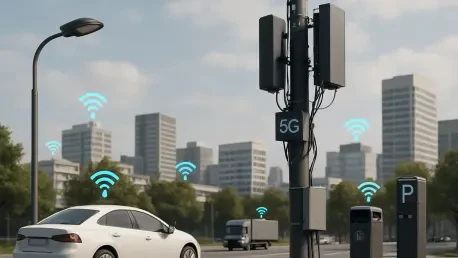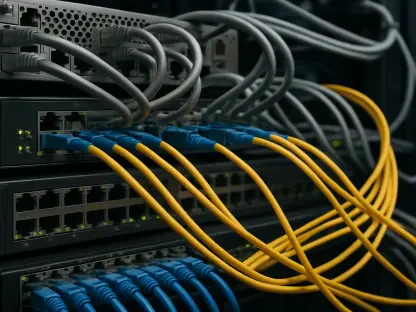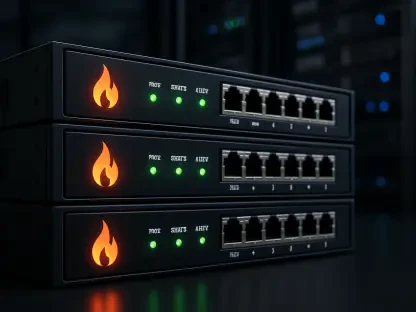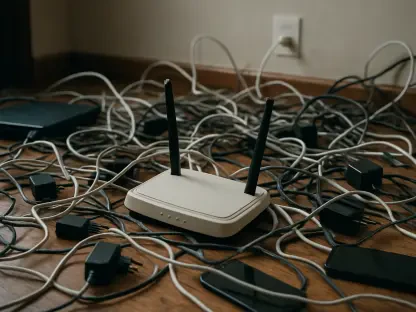Imagine a world where a farmer in a remote desert region can monitor crops in real-time, or a shipping company can track containers across the vast expanse of the Pacific Ocean without a single connectivity gap, thanks to groundbreaking satellite technology. This vision is no longer a distant dream but a tangible reality, thanks to a pioneering achievement in satellite telecommunications. A historic collaboration has successfully completed the first-ever 5G IoT transmission from a Low Earth Orbit (LEO) satellite constellation to a standard commercial cellular IoT device. This milestone, driven by innovative companies in the field, marks a transformative leap in global connectivity. It bridges the gap between terrestrial and space-based networks, promising to extend communication to the most isolated corners of the planet. As this technology unfolds, it is set to redefine industries, empower communities, and solidify regional leadership in telecommunications.
Breaking New Ground in Satellite Technology
Pioneering 5G IoT Transmission
The recent success of transmitting 5G IoT signals from LEO satellites to a standard commercial device represents a monumental step forward in communication technology. This achievement demonstrates the seamless integration of satellite and terrestrial networks, allowing IoT devices to operate without the need for specialized hardware. A key test involved a low-power cellular IoT module sending an end-to-end message through a LEO satellite constellation, proving full interoperability with existing mobile infrastructure. This mimics the roaming experience users are accustomed to on land-based networks, adhering to the 5G NB-IoT Release 17 standard for reliability and compatibility. Such a breakthrough eliminates traditional barriers, enabling devices to connect effortlessly, whether in urban centers or remote wilderness. The implications of this are vast, as it validates the potential for global coverage, ensuring that even the most isolated regions can tap into modern communication networks with ease and efficiency.
Collaborative Innovation Driving Progress
Behind this remarkable feat lies a synergy of expertise from key players in the satellite and semiconductor industries, uniting to push the boundaries of what’s possible. Their combined efforts have not only achieved a technical milestone but also set a precedent for future advancements in IoT connectivity. The focus on using standardized, low-cost IoT sensors to connect directly from space underscores the accessibility of this technology. This collaborative approach has ensured that the solution is not just innovative but also practical for widespread adoption. By aligning with global standards, the project guarantees compatibility with existing systems, reducing the need for costly overhauls or custom equipment. Furthermore, this partnership highlights the importance of a shared vision in overcoming longstanding challenges in machine-to-machine communication. The result is a scalable framework that promises to accelerate IoT deployments across diverse applications, from environmental monitoring to critical infrastructure management.
Transforming Global Connectivity and Beyond
Bridging Coverage Gaps Worldwide
One of the most profound impacts of 5G IoT via LEO satellites is its ability to address the staggering connectivity gaps that persist across the globe. Terrestrial networks currently cover only about 20% of the Earth’s surface, leaving vast areas such as oceans, deserts, and remote rural regions entirely disconnected. This new technology extends coverage to the remaining 80%, offering a lifeline to industries and communities previously out of reach. For sectors like logistics, agriculture, and defense, this means real-time data access in environments where traditional infrastructure is nonexistent. The affordability and resilience of this solution make it a game-changer, democratizing access to communication tools that were once a luxury. By enabling standard devices to connect from space, this innovation ensures that no corner of the planet remains isolated, fostering inclusivity and opening up new opportunities for economic growth and societal development in underserved areas.
Strategic and Commercial Implications
Beyond its technical achievements, the deployment of 5G IoT through LEO satellites carries significant strategic and commercial weight, particularly for Europe. This milestone reinforces the region’s leadership in satellite and next-generation communication technologies, aligning with broader goals of competitiveness and security in telecommunications. The market traction is already evident, with substantial contracts signed with hundreds of customers across dozens of countries, reflecting strong global demand. Projections indicate robust revenue growth in the coming years, highlighting the commercial viability of this technology. For industries constrained by infrastructure limitations, this development offers a pathway to innovation and efficiency. It also positions Europe as a hub for pioneering solutions that address global challenges, ensuring strategic autonomy in a critical sector. The ripple effects of this achievement will likely inspire further investment and collaboration, driving economic benefits while enhancing the region’s influence on the world stage.
Reflecting on a Connectivity Milestone
Looking back, the successful integration of 5G IoT with LEO satellites stood as a defining moment that reshaped the landscape of global communication. This achievement bridged critical gaps, connecting the unconnected and empowering industries with tools once thought impossible. As the technology matured, it became a cornerstone for future innovations, proving that seamless, worldwide connectivity was not just feasible but essential. Moving forward, stakeholders must focus on scaling these solutions, ensuring affordability remains a priority for widespread adoption. Governments and businesses alike should explore partnerships to deploy this technology in critical areas, from disaster response to sustainable agriculture. Additionally, continued investment in research will be vital to refine and expand the capabilities of satellite-based IoT networks. This historic breakthrough laid the foundation for a more connected world, and the next steps involve building on that legacy to address emerging challenges and unlock even greater potential for global impact.









